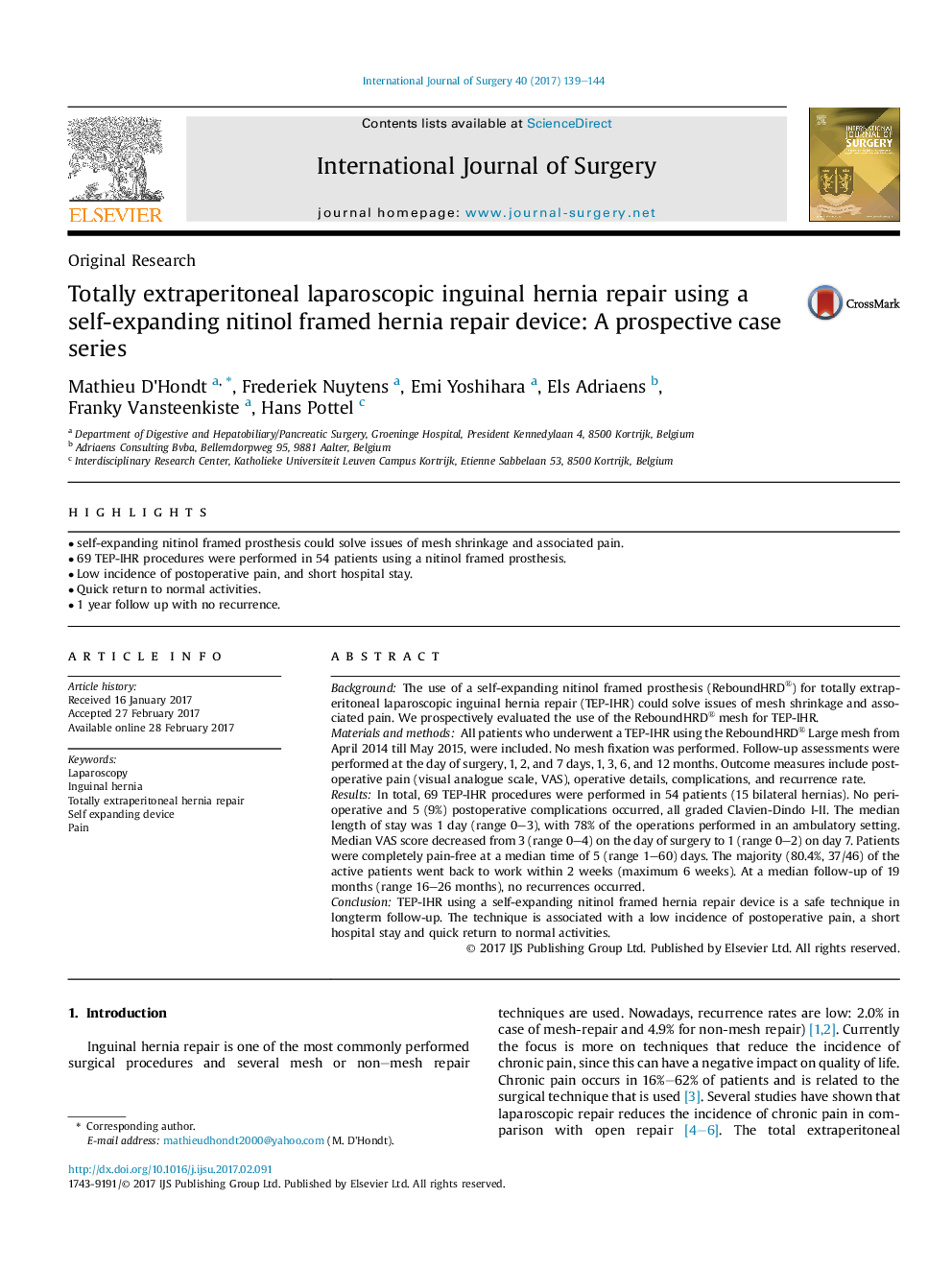| کد مقاله | کد نشریه | سال انتشار | مقاله انگلیسی | نسخه تمام متن |
|---|---|---|---|---|
| 5732287 | 1611939 | 2017 | 6 صفحه PDF | دانلود رایگان |
- self-expanding nitinol framed prosthesis could solve issues of mesh shrinkage and associated pain.
- 69 TEP-IHR procedures were performed in 54 patients using a nitinol framed prosthesis.
- Low incidence of postoperative pain, and short hospital stay.
- Quick return to normal activities.
- 1 year follow up with no recurrence.
BackgroundThe use of a self-expanding nitinol framed prosthesis (ReboundHRD®) for totally extraperitoneal laparoscopic inguinal hernia repair (TEP-IHR) could solve issues of mesh shrinkage and associated pain. We prospectively evaluated the use of the ReboundHRD® mesh for TEP-IHR.Materials and methodsAll patients who underwent a TEP-IHR using the ReboundHRD® Large mesh from April 2014 till May 2015, were included. No mesh fixation was performed. Follow-up assessments were performed at the day of surgery, 1, 2, and 7 days, 1, 3, 6, and 12 months. Outcome measures include post-operative pain (visual analogue scale, VAS), operative details, complications, and recurrence rate.ResultsIn total, 69 TEP-IHR procedures were performed in 54 patients (15 bilateral hernias). No perioperative and 5 (9%) postoperative complications occurred, all graded Clavien-Dindo I-II. The median length of stay was 1 day (range 0-3), with 78% of the operations performed in an ambulatory setting. Median VAS score decreased from 3 (range 0-4) on the day of surgery to 1 (range 0-2) on day 7. Patients were completely pain-free at a median time of 5 (range 1-60) days. The majority (80.4%, 37/46) of the active patients went back to work within 2 weeks (maximum 6 weeks). At a median follow-up of 19 months (range 16-26 months), no recurrences occurred.ConclusionTEP-IHR using a self-expanding nitinol framed hernia repair device is a safe technique in longterm follow-up. The technique is associated with a low incidence of postoperative pain, a short hospital stay and quick return to normal activities.
Journal: International Journal of Surgery - Volume 40, April 2017, Pages 139-144
